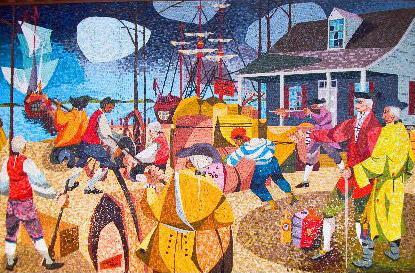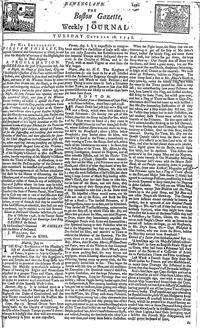Spanish Attack
In the early Colonial period, England was constantly at war with both France and Spain, so attacks on English colonists by the French or the Spanish was an ever-present threat at Brunswick Town. In September 1748, two Spanish war ships dropped anchor in the port and came ashore to capture slaves and wreck havoc on the town. However, the colonists saw the Spanish coming and quickly retreated, grabbing their valuables and fleeing into the woods. With the town unguarded, the Spanish began looting buildings and ransacking the town.1

Meanwhile, William Dry III, Port Collector for Brunswick, gathered 67 men armed with “pistols, muskets, powder and shot, powder flasks, gunflints” and food rations.2 Three days after the Spanish landed, Dry led these men along with other prominent townsmen in a surprise counter-attack that completely caught the Spanish off-guard. The colonists brought a small cannon to the attack with them, and started a fire fight with the Spanish ship still docked off-shore, during which the Spanish ship blew up, killing most of those still on-board.3

from October 1748
The colonists salvaged what valuables they could from the sunken ship, including some of the valuables which had been stolen from Brunswick by the Spanish. A painting of Christ called “Ecce Homo” was also retrieved from the ship and was given to St. James Church in Wilmington, where it remains to this day. The town used the money received from the sale of the goods and the captured Spanish sold into slavery to continue the building of St. Philips Church in Brunswick and St. James Church in Wilmington.4
Notes
1. Pedlow, The Story of Brunswick Town, 20.
2. Pedlow, The Story of Brunswick Town, 20.
3. Pedlow, The Story of Brunswick Town, 21.
4. Pedlow, The Story of Brunswick Town, 21
